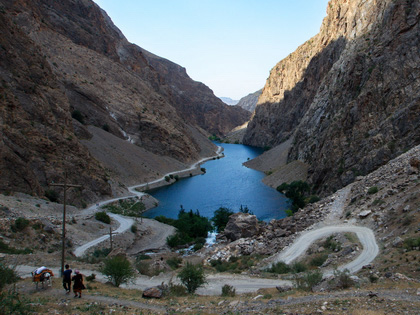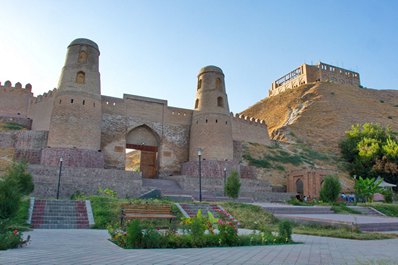Hissar, Tajikistan
Tours, Attractions and Things To Do in Hissar
Located 30 km from Dushanbe (4-5 km from Hissar settlement) is one of the most important landmarks of Tajikistan - Hissar History and Culture Reserve. This name is related to archeological and architectural monuments of different ages found on its 86-hectar territory. The reserve location - Hissar Valley - is a vast intermountain hollow with the rivers Kafirnigan, Karatag and Shirkent. People inhabited this place in the Stone Age, in the 4th-3rd millennia B.C. Later the valley territory was a part of Bactria, and then of Greek-Bactrian and Kushan states. This fact is proved by the remains of ancient settlement found by the archeologists. However, today only orbicular mounds called "tepa” - "a hill" - has survived. In the Middle Ages Hissar was known for its crafts and markets. In the 18th - 19th centuries it was known as Hissar province - one of 28 domains of Bukhara Emirate. Hissar fortress which has survived since those times is considered the most famous landmark of the reserve.
The city is located in the central western part of the republic, in the center of Hissar Valley, the greenest and the most densely populated part of the country. The city is surrounded by mountains: from the north by
The Hissar Ridge, from the south - the Gazimalik Mountains, from the southwest - the Babatag Mountains. It has been proven that people inhabited Hissar Valley 40 thousand years ago.
The sacred book of Zoroastrians «Avesta» mentioned this area as «Shumon». For the first time the word «Hissar» («hissor») as a name of a settlement, city or an administrative unit was mentioned in the 11th century. Then this word designated a site of ancient settlement with state armies, crafts, and a market. Way back then the city was the center of the most independent part of Samanid state.
In the late 19th and the early 20th centuries the architectural complex of the city consisted of two madrasahs, over a dozen mosques, four city gates, and a central market. The construction the modern Hissar in the form of kishlak began in the beginning of the twentieth century.
Hissar Landmarks:
Hissar is known for its unique historical and cultural reserve organized in the late 1980s. It comprises:
1. Hissar Fortress with the arch (gate). It was erected manually. It is 2,500 years old. The main gate is the arch one. The gate was constructed in the 16th century and now they have been completely restored.
2. Registan (the square in front of the fortress).
3. Old madrasah. This medieval educational institution was built in the 16th century. The madrash's area is 2,250 m..
4. New madrasah.
5. Caravanserai (hotel). The brick caravanserai was constructed in 1808 during the rule of Saidbi Atolik and was used as a hotel.
6. Chashmai Mokhiyon mosque (the Stone Mosque). It was built in the 8th century. The two verandahs and the tower - in the 15th century .Today it has been restored to its original appearance.
7. Sangin mosque.
8. The mausoleum of Makhdumi Azam is a historical monument of the 16th century; it was erected on the place of Khodzhi Muhammed Khaivoki's tomb. The area of the mausoleum is 609 sq. m.
9. The History Museum. It is located in the building of old madrasah. The entire nomenclature of monuments and exhibits (more than 3,200 items), found during excavation works on the territory of the city of Hissar and beyond is kept there.





